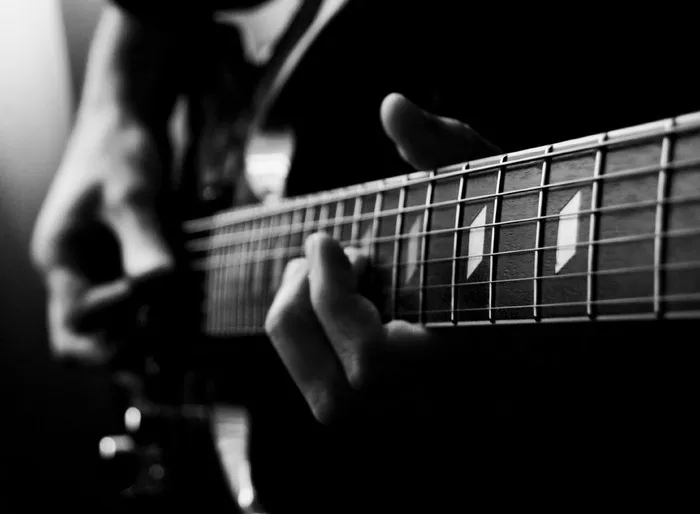Blues music is a timeless genre that has captivated audiences for generations with its raw emotion, soulful melodies, and rich history. Originating from African-American communities in the Deep South of the United States in the late 19th century, blues music served as a means of expression for individuals facing oppression and hardship.
The significance of blues music lies in its ability to convey profound emotions such as sadness, longing, and resilience. Rooted in African musical traditions, blues music blends elements of spirituals, work songs, and field hollers to create a distinctive sound characterized by its emotive vocals, intricate guitar work, and improvisational nature.
At the heart of blues music is its soulful, rich sound, which is achieved through the use of expressive techniques such as bending, sliding, and vibrato on the guitar. These techniques allow players to infuse their playing with emotion and convey the depth of feeling inherent in the blues.
One of the defining features of blues music is its groove—the infectious rhythm and feel that underpins every blues song. Whether it’s a slow, smoky ballad or an up-tempo shuffle, the groove is what gives blues music its irresistible pulse and draws listeners in.
Rhythm Guitar Basics
Rhythm guitar plays a crucial role in blues music, providing the harmonic foundation and driving rhythm that supports the melody and vocals. Unlike lead guitar, which takes center stage with flashy solos and improvisation, rhythm guitar lays down the rhythmic framework upon which the entire song is built.
To get started with blues rhythm guitar, it’s essential to learn a handful of basic chords, particularly the ‘7’ chords, which add a bluesy flavor to your playing. These chords include E7, A7, and B7, among others, and are characterized by their dominant seventh intervals, which create tension and resolve in a way that is quintessentially bluesy.
Keeping a solid groove is paramount in blues rhythm guitar, as it ensures that the music maintains its infectious feel and momentum. Focus on locking in with the drummer and bassist, and pay close attention to your timing and dynamics to ensure a tight, cohesive sound.
SEE ALSO: Electric vs Acoustic Guitar: Which is Easier to Learn?
12-Bar Blues Progression
The 12-bar blues progression is the backbone of countless blues songs and serves as the framework upon which much of the genre is built. This simple yet versatile chord progression consists of three chords—typically the I, IV, and V chords of a key—and spans 12 bars in total.
Artists like John Mayer, B.B. King, and John Lee Hooker have all utilized the 12-bar blues progression in their music, demonstrating its enduring appeal and flexibility across different styles and eras. Whether it’s the electrifying Chicago blues of B.B. King or the stripped-down, Delta blues of John Lee Hooker, the 12-bar blues progression forms the basis of their iconic sound.
Playing the 12-bar blues in different keys is essential for expanding your repertoire and versatility as a guitarist. Practice transitioning between different keys smoothly and confidently, and experiment with variations on the basic progression to create your own unique blues arrangements.
Lead Guitar Techniques
Lead guitar is where blues guitarists get to showcase their creativity and improvisational skills, taking center stage with fiery solos and expressive melodies. Unlike rhythm guitar, which provides the harmonic foundation of a song, lead guitar is all about melody, expression, and improvisation.
One of the most important scales in blues lead guitar is the minor pentatonic scale, which serves as the basic alphabet of blues language. This five-note scale is incredibly versatile and can be used to create countless melodic ideas and improvisations over blues chord progressions.
In addition to the minor pentatonic scale, blues lead guitarists utilize a variety of techniques to add depth and expression to their playing. These include bends, slides, vibrato, and hammer-ons/pull-offs, all of which allow players to infuse their solos with emotion and nuance.
Cool Turnarounds and Licks
Turnarounds are transitional phrases that occur at the end of a chord progression, signaling the return to the beginning of the progression. In blues music, turnarounds often serve as a climactic moment, adding tension and excitement before resolving back to the tonic chord.
Lead guitar licks are short, melodic phrases that are used to embellish solos and add interest to a guitarist’s playing. From lightning-fast runs to soulful bends and slides, there are countless licks to explore and incorporate into your blues repertoire.
Experimentation is key when it comes to learning turnarounds and licks, so don’t be afraid to try out different variations and combinations to see what works best for you. Practice with backing tracks or jam along with your favorite blues records to develop your improvisational skills and find your own unique voice on the guitar.
Proper Posture and Guitar Anatomy
Maintaining proper posture while playing guitar is essential for avoiding discomfort and injury and ensuring optimal performance. Sit or stand with your back straight and shoulders relaxed, and position the guitar so that it rests comfortably against your body without causing strain.
Familiarize yourself with the anatomy of the guitar, including the body, neck, headstock, and tuning pegs. Understanding how the different parts of the guitar work together will not only deepen your appreciation for the instrument but also enhance your ability to play it effectively.
Conclusion
In conclusion, learning blues guitar is a rewarding journey that offers endless opportunities for creativity, self-expression, and musical exploration. By mastering essential techniques, familiarizing yourself with classic blues repertoire, and developing your own unique style, you can become a confident and versatile blues guitarist capable of captivating audiences with your soulful playing. So pick up your guitar, dive into the world of blues music, and let your creativity soar.


